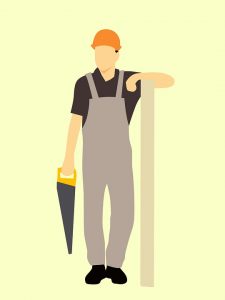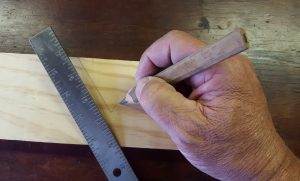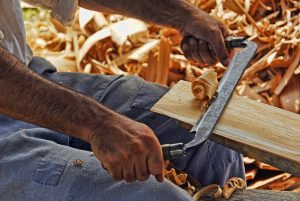
Being a beginner can always be a little tricky. Taking the first steps towards learning a new skill can be demanding, but the payoff is usually worth the effort. Learning woodworking is a true-life skill. Unlike many other things you can learn woodworking comes with practical real-world benefits. Knowing how to use tools to create something interesting and useful out of wood is a skill that can pay dividends throughout life.
Much like learning a foreign language, a skill like woodworking will benefit you in many different ways. Learning woodworking gives you an opportunity to show off your creative side and is also a fun way to reduce stress and unwind, while at the same time creating something beautiful and interesting. When you say that you do woodworking, you’ll find it really is a serious conversation starter. People will be very curious to hear about the types of creations you’re working on.
The projects you create through woodworking will become a part of your life and, with practice, you can achieve a level of proficiency that could make your woodworking creations of heirloom quality so that future generations can use and enjoy them.
In this article, we’ll explore some of the key gear that you’ll need in order to begin woodworking. Some of the items that you need for woodworking are obvious but others are less so. Safe and effective woodworking is about much more than simple tool selection. Just as painting is about much more than paint, the same holds true for the world of woodworking.
A Dedicated and Safe Space

Woodworking differs from many other hobbies, such as painting, in that you can’t simply set up your tools in a corner and “go to work” at least not safely. Woodworking, due to the nature of the work, involves setting aside a dedicated space. Ideally, the best space is one that is quiet and offers some level of privacy. If you have a basement or garage that you can dedicate just for your workshop, that is ideal. You don’t want to necessarily share the space with your kid’s playroom or family exercise area.
As someone new to woodworking, the last thing that you want is to be interrupted while cutting or sawing. If you have children and/or pets you’ll want to be sure that your tools and workspace are locked away and secure. While you are woodworking you’ll want to keep your children and pets out of the area. Again, woodworking while both an artistic and practical endeavor, isn’t like painting, which also has some hazards involved such as chemical exposure. Woodworking can be very dangerous and the process must be respected.
The Importance of Proper Lighting

You can select the best tools but improper lighting can be very dangerous where woodworking is concerned. This may seem like an obvious point, but far too many woodworking beginners fail to take the importance of proper lighting into consideration.
Saw, cutting, power tools and poor lighting simply don’t mix. Don’t assume that the level of light you use for reading, for example, is appropriate for woodworking. In woodworking, it is imperative that you are able to clearly see what you are doing at all times.
Finding Proper Instruction
Perhaps the single most important step a beginning woodworking needs to take is to seek out instruction. The greatest tool in woodworking is knowledge, not a specific saw or bench. Finding proper instruction is always a savvy place to begin when learning any complicated skill, like woodworking.

YouTube is rich with woodworking videos and it would be easy to stop there; however, there is no replacement for taking a class. If you have access to a woodworking class for beginners then this is a smart place to begin your journey.
The simple fact is that information is the most important tool you have in the process of learning woodworking. A seasoned and experienced instructor can be invaluable and help greatly accelerate the learning process. The time and money you invest in a class, and to a lesser extent woodworking books and videos, is time and money very well spent. Whenever you want to learn the “tricks of trade” it is best to seek out those who already know the tricks!
Remember That You Are a Beginner

Armed with a dedicated and safe space to work in, proper lighting and instruction you are ready to begin woodworking. Safety gear such as googles are a must, but the most critical safety feature is to be well aware of your surroundings and carefully think about what you are doing at all times when woodworking.
Beginners should be respectful of the fact that they are, in fact, beginners. This means that the tools you select and the projects you
attempt to tackle should be simple. By starting with same projects that involve a minimum amount of cutting you will be able to apply what you are learning and “get your feet wet.” Optimally, you should spend some time learning the basics of your new skill before trying to wrestle with more advanced projects.
A handsaw may take longer, but it is certainly safer than a power saw, especially when used correctly. Other key tools in addition to a handsaw are reliable clamps. Proper cutting technique is dependent upon using quality clamps to hold wood in place.
A quality work table, preferably one with built in clamps and a high weight capacity is another prudent idea. All too often woodworking beginners opt for an inexpensive work table. Inexpensive work tables usually have lower weight capacities. Select at least a mid-range quality work table and look for one that has excellent reviews.

Combine these factors together and you will have a safe and production woodworking experience. Remember that woodworking experts all began as beginners like you. Don’t rush the process and start with small projects of minimal complexity and your efforts will most definitely be rewarded!
